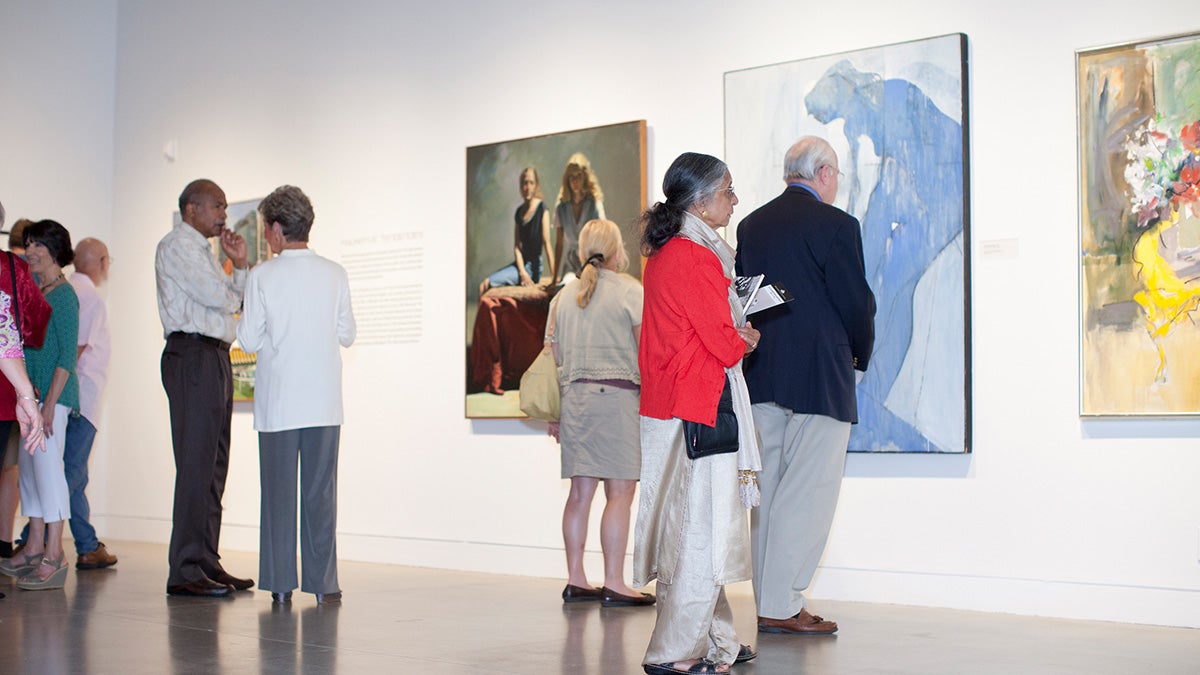Delaware Art Museum ‘dreaming’ of better days

(Photo courtesy/Delaware Art Museum)
A new exhibit focusing on Wilmington’s art scene from 1970-1990 could be a new direction for the Delaware Art Museum.
When Delaware Art Museum CEO Mike Miller talks about “Dream Streets,” there’s a definite note of excitement in his voice. And no wonder. The exhibit, which focuses on Wilmington’s counterculture art scene from 1970- 1990, drew 600 visitors on its opening night in June.
The response was a welcome vote of confidence after the museum came under fire from national museum groups—and some of its own members—for selling four works from its 12,500-piece collection to help retire debt left over from an ambitious 2005 facilities expansion.
Like other institutions, the museum’s board planned the project in better economic times but the global financial crisis of 2008 decimated its endowment, forcing its lender to call in the debt.
“When the decision was made to sell the art, it was in violation of our own ethics,” says Miller. “But at the time we thought that that was a good trade-off if we were going to save the museum. Do you have the whole thing go away or just a part?”
Still, the move to sell the masterpieces drew sanctions from two professional museum associations. The museum lost its accreditation with the American Alliance of Museums (AAM) and is barred from borrowing works from many museums nationwide by the Association of Museum Directors (AAMD).
But retiring the debt has had its benefits. Foundations and individuals who were hesitant to donate because of the museum’s shaky finances are once again pumping cash into the century-old institution. The Longwood Foundation has offered a $500,000 grant. Additional donations have enabled the museum to endow its chief curator position.
Turning the corner; rebuilding trust
Indeed, donor recruitment is a major component of the museum’s plan to maintain financial stability. Miller says the museum will be engaging in “friend-building,” reaching out to those who fell away from the institution because they disagreed with either the expansion or the sale of art.
Other strategies will include efforts to make the museum more welcoming and accessible. A gift from a donor allowed the museum to refurbish the Fusco Great Hall with new artwork, colors and furniture earlier this year. Plans are also underway to upgrade the Kids’ Korner located in the basement. Additionally, the museum is offering extended hours for free admission on Thursday evenings and Sunday mornings. The museum has also added a position in its education department to reach more kids.
“If we can get them in the door, the more likely they’ll become members and donors down the road,” says Miller. Membership has increased by 7 percent since January.
Future exhibits planned
In November it will showcase the work of pre-Raphaelite artist Marie Spartali Stillman. The museum will supplement its collection of her work—the largest in the world—with loans from U.K.museums and private collections.
In March 2016 the museum will host an exhibit by the Smithsonian American Art Museum “Our America: the Latino presence in American Art,” an exhibit of the works of modern Latino artists. The Delaware showing is one of many in a muti-year tour of the exhibit.
The Smithsonian is very aware of the sanctions. In a statement, Smithsonian spokesperson Laura Baptiste is carefult to point out the distinction of taking an exhibit to the Delaware Art Museum and coordinating an arts program with the museum. In a statement Baptiste said, “We oppose any museum selling parts of its collection to pay the bills, and we appreciate the reasons AAMD imposed sanctions against the Delaware Art Museum.”
They decided to honor the agreement that had been in place since 2013 which was signed by Miller’s predecessor, Danielle Rice. The Delaware Art Museum was published in a catalogue as a venue for the exhibition.
“The exhibit is not a collaborative effort between the Smithsonian American Art Museum and the Delaware Art Museum, but is an exhibition wholly conceived and organized by the Smithsonian American Art Museum that will be hosted by the Delaware Art Museum as part of a multi-year tour,” Baptiste added in the statement.
The museum is also making an investment in its staff by bringing salaries and benefits to more competitive levels. Because salaries and benefits consumer more than half of the museum’s budget, staff had to accept lower salaries and no pension contributions during the financial crisis, Miller says.
“We want this to be a great, fun place t work,” says the 65-year-old Miller who became director of the Kentmere Parkway facility in 2013 following the departure of Danielle Rice who left to oversee a new museum leadership graduate program at Drexel University in Philadelphia.
Miller says the museum will also be reaching out to the associations to get back its accreditation and borrowing privileges, the denial of the latter has made mounting exhibits a bit difficult, he says.
But there is no deadline for lifting the sanctions on obtaining art on loan from other museums and their removal is determined on a case-by-case basis, Executive Director Christine Anagnos wrote in an email exchange.
Miller expects the endowment to total around $25 million by year’s end and says the museum should be able to fund its operating expenses from the earnings without touching the principal.
But what if there’s another financial crisis, would the museum consider selling more artwork to generate revenue? “Never,” says Miller. “Having done so once, it would be much harder a second time. Our raison d’etre is to protect the art so that it’s here 100 years from now. That’s who we are.”
WHYY is your source for fact-based, in-depth journalism and information. As a nonprofit organization, we rely on financial support from readers like you. Please give today.




